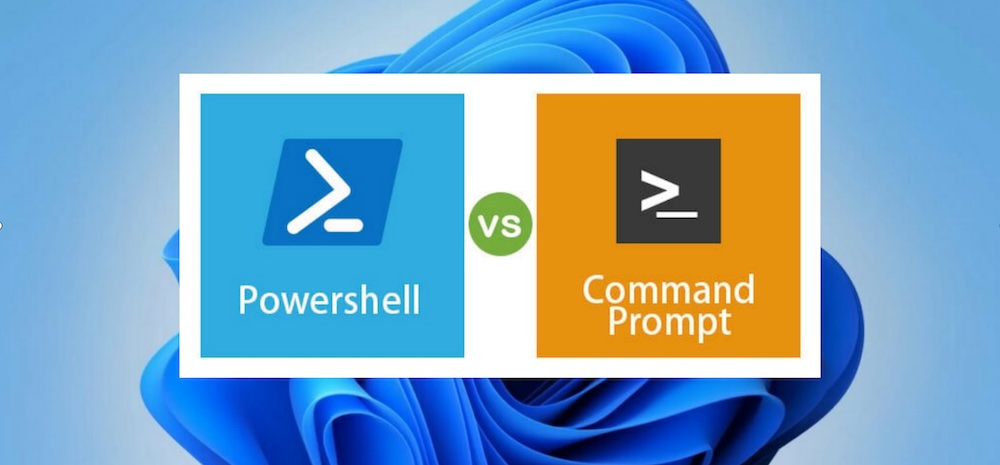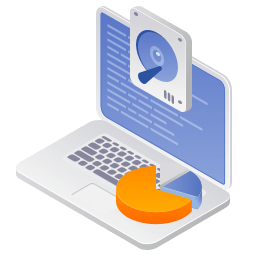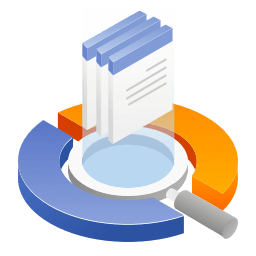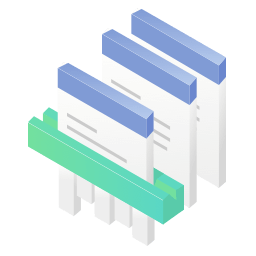PAGE CONTENT:
The Windows operating system has long provided users with command-line tools for performing administrative tasks, managing system settings, and automating processes. Two of the most prominent tools are the Command Prompt (CMD) and Windows PowerShell. While CMD has been a staple since the early days of Windows, PowerShell represents a more modern, versatile approach to command-line interfaces.

Understanding the differences between these tools is essential for system administrators, developers, and even tech enthusiasts who wish to leverage the full power of their Windows environment. This article explores the features, differences, and use cases of both Command Prompt and Windows PowerShell, helping you decide which tool best suits your needs.
What is Command Prompt (CMD)?
Definition and Brief History
Command Prompt, often referred to simply as CMD or the Windows Command Line, is a command-line interpreter application available in most Windows operating systems. CMD has its roots in the early Microsoft Disk Operating System (MS-DOS), which provided a text-based interface for managing files, executing programs, and performing other system tasks.

When Windows NT was introduced, CMD replaced the older MS-DOS Command.com, offering more functionality and better integration with the Windows environment. Despite its evolution, CMD retained much of its original simplicity and syntax, making it familiar to those accustomed to DOS-based systems.
Key Features and Functions
Top 7 key features and functions of CMD are as follows:
- File and Directory Management: CMD allows users to navigate the file system, create directories, and manage files using commands like cd, dir, mkdir, and del.
- Basic Network Configuration: Commands such as ipconfig and ping help users troubleshoot network connections.
- Batch Scripting: CMD supports batch files (.bat), which are scripts containing a series of commands executed sequentially.
- System Utilities: Commands like chkdsk, sfc, and diskpart assist in system maintenance and troubleshooting.
- Process Management: CMD allows users to view and manage running processes with commands like tasklist to display active processes and taskkill to terminate specific processes.
- System Information Retrieval: Commands such as systeminfo provide detailed information about the system's hardware and software configuration, including installed updates, memory usage, and processor details.
- Drive Management: CMD facilitates managing disk drives with commands like diskpart for partition management, format for preparing drives for use, and label for assigning or changing drive labels.
Common Use Cases for CMD
- Running simple commands for quick tasks.
- Managing files and directories from the command line.
- Writing basic scripts for repetitive tasks.
- Troubleshooting network and system issues.
Pros and Cons of CMD
✅ Pros:
- Lightweight and fast.
- Easy to learn and use for simple tasks.
- Backward compatibility with older systems.
- Widely documented and supported.
❌ Cons:
- Limited functionality compared to modern tools.
- Poor support for complex scripting and automation.
- Text-based output without structured data handling.
What is Windows PowerShell?
Definition and History
Windows PowerShell is a task-based command-line shell and scripting language designed for system administration. Introduced by Microsoft in 2006, PowerShell was built on the .NET Framework, providing powerful capabilities for automating system tasks, managing system configurations, and administering Windows environments more efficiently.

PowerShell has undergone significant evolution, with the introduction of PowerShell Core in 2016, which is cross-platform and built on .NET Core, and eventually the transition to PowerShell 7, which combines the best features of both the Windows-specific and cross-platform versions.
Key Features and Capabilities
Top 7 key features and functions of PowerShell are as follows:
- Cmdlets: PowerShell commands, known as cmdlets, are specialized .NET classes that perform specific functions, such as Get-Process or Set-ExecutionPolicy.
- Object-Oriented Output: Unlike CMD's text-based output, PowerShell returns objects, allowing users to manipulate and format data more effectively.
- Scripting and Automation: PowerShell supports complex scripting with loops, conditions, and error handling, making it ideal for automating administrative tasks.
- Remoting and Automation: PowerShell can manage remote systems using Enter-PSSession and Invoke-Command.
- Integration with .NET: Direct access to .NET libraries expands PowerShell's functionality, enabling advanced operations.
- Pipeline Functionality: PowerShell's pipeline allows you to pass objects from one cmdlet to another, enabling more efficient and flexible data manipulation. Unlike CMD, which passes text, PowerShell pipelines handle structured objects, which makes chaining commands more powerful and dynamic.
- Module Support: PowerShell allows users to extend its functionality through modules. These modules contain collections of cmdlets, functions, and scripts that provide additional features, such as managing cloud resources, interacting with databases, or automating network tasks.
Common Use Cases for PowerShell
- Automating repetitive administrative tasks.
- Managing Windows services, processes, and user accounts.
- Configuring system settings and security policies.
- Integrating with cloud services like Azure.
- Performing bulk operations on Active Directory and other enterprise systems.
Pros and Cons of PowerShell
✅ Pros:
- Advanced scripting capabilities.
- Object-based output for better data manipulation.
- Extensive integration with Windows components and third-party services.
- Cross-platform support with PowerShell Core/7.
- Rich set of built-in cmdlets and modules.
❌ Cons:
- Steeper learning curve compared to CMD.
- Higher resource usage.
- Overkill for simple tasks where CMD would suffice.
Key Differences Between PowerShell and CMD
Although both CMD and PowerShell serve as command-line interfaces, they differ significantly in terms of functionality, design, and usage. Have a look at 7 areas where it differs.
1. Syntax and Commands
CMD uses simple, text-based commands similar to DOS, such as dir for listing directory contents or copy for copying files. PowerShell, on the other hand, uses cmdlets, which follow a Verb-Noun naming convention, such as Get-ChildItem (similar to dir) or Copy-Item (equivalent to copy).
2. Scripting Capabilities
CMD supports batch scripting, which is straightforward but limited. PowerShell provides a full-fledged scripting language with support for variables, loops, conditionals, and error handling, making it suitable for complex automation tasks.
3. Integration with Windows OS
PowerShell offers deeper integration with Windows components, allowing users to manage the registry, services, scheduled tasks, and more directly from the command line, which CMD cannot achieve without additional tools.
4. Object-Oriented Output
One of PowerShell's standout features is its object-oriented output. Every command returns an object, which can be filtered, manipulated, and passed to other commands, unlike CMD's plain text output.
5. Extensibility and Automation
PowerShell can be extended through modules, scripts, and integration with .NET libraries, enabling advanced automation and system management, whereas CMD's functionality is limited to basic tasks.
6. Pipeline Functionality
While both tools support pipelines, CMD's pipeline is limited to text strings. PowerShell pipelines pass objects, allowing for more sophisticated data manipulation and command chaining.
7. Support for .NET Framework
PowerShell's access to the .NET Framework opens up a wide array of functions, from file operations to network management, providing more power and flexibility than CMD.
When to Use CMD vs. When to Use PowerShell
Choosing between CMD and PowerShell depends on the task at hand, your familiarity with each tool, and the level of complexity required.
Scenarios Best Suited for CMD
- Simple File Operations: Copying, deleting, or moving files.
- Quick Network Troubleshooting: Using ping or ipconfig for basic checks.
- Basic System Commands: Running tools like chkdsk or sfc.
- Legacy Systems: Working with older systems or scripts that rely on CMD.
Scenarios Where PowerShell is More Effective
- Complex Automation: Automating system tasks using scripts.
- Managing Windows Components: Handling services, registry, and user accounts.
- Remote Administration: Managing remote machines seamlessly.
- Working with Structured Data: Manipulating JSON, XML, or CSV files.
- Integration with Cloud Services: Managing Azure resources via command line.
Which Tool to Choose for Scripting and Automation Tasks
For simple, linear tasks, CMD remains a quick and effective choice. However, for complex operations, especially those involving multiple steps, data manipulation, and remote management, PowerShell is undoubtedly the superior tool due to its robustness and flexibility.
Commands Comparison Table
|
Task |
CMD Command |
PowerShell Command |
|---|---|---|
| List directory contents | dir | Get-ChildItem |
| Copy a file | copy file1 file2 | Copy-Item file1 file2 |
| Delete a file | del file | Remove-Item file |
| Change directory | cd directory | Set-Location directory |
| Display IP config | ipconfig | Get-NetIPAddress |
| Check running processes | tasklist | Get-Process |
Advantages of PowerShell Over CMD
While CMD remains useful for straightforward tasks, PowerShell's advantages are undeniable:
- Better Scripting Capabilities: PowerShell scripts are more powerful, offering complex control structures and error handling.
- Advanced Automation Features: Automate system tasks, including those requiring conditional logic and loops.
- Integration with Cloud Services: Seamlessly manage cloud environments like Azure.
- Remote Management: Perform administrative tasks on remote systems without third-party tools.
- Rich Ecosystem: Access a vast library of cmdlets and modules for virtually any administrative task.
Is CMD Becoming Obsolete?
Microsoft has continued to support CMD, even in the latest versions of Windows, though the focus has shifted towards PowerShell for advanced administrative tasks. CMD remains available and widely used, particularly for legacy systems and simpler tasks. However, PowerShell's capabilities make it the tool of choice for modern system administration, scripting, and automation.
As Microsoft pushes for more automation and integration with cloud services, PowerShell's role is only expected to grow. While CMD may never become entirely obsolete, its importance is gradually being overshadowed by the versatility and power of PowerShell.
Conclusion
Both Command Prompt and PowerShell serve essential roles in the Windows ecosystem, but they cater to different needs. CMD's simplicity makes it suitable for quick, straightforward tasks, while PowerShell's extensive functionality and scripting capabilities make it the preferred tool for complex operations and automation. Understanding when to use each tool will enhance your productivity and allow you to manage your Windows environment more efficiently.


Donemax Data Recovery
Donemax Data Recovery Powerful, safe & easy-to-use data recovery software to easily and completely recover deleted, formatted, inaccessible and lost data from PC, Mac, HDD, SSD, USB drive, camera, SD card, RAID and other storage devices.
Related Articles
- Jun 25, 2025What Is Internet Recovery Mode on Mac? What Can It Do?
- Jan 14, 2025About Mac Partition Scheme: GUID Partition Map, Master Boot Record, Apple Partition Map
- Aug 04, 2025macOS Tahoe vs. macOS Sequoia: Full Comparison
- Nov 18, 2025What Can Mac Disk Utility Do?
- May 20, 2025MBR vs. GPT: What's the Difference and Which Should You Use?
- Jul 07, 2025What Is RAW File System? How to Fix RAW File System?

Charles
Charles, who lives in Sydney, Australia, is an editor & writer of Donemax Team. He is good at writing articles related with Apple Mac computers, Windows operating systems, data recovery, data erasure, disk clone and data backup, etc. He loves reading and playing tennis in his spare time and is interested in testing new digital devices such as mobile phones, Macs, HDDs, SSDs, digital cameras, etc.

Gerhard Chou
In order to effectively solve the problems for our customers, every article and troubleshooting solution published on our website has been strictly tested and practiced. Our editors love researching and using computers and testing software, and are willing to help computer users with their problems
Hot Donemax Products

Clone hard drive with advanced clone technology or create bootable clone for Windows/Mac OS.

Completely and easily recover deleted, formatted, hidden or lost files from hard drive and external storage device.

Certified data erasure software - permanently erase data before selling or donating your disk or any digital device.
